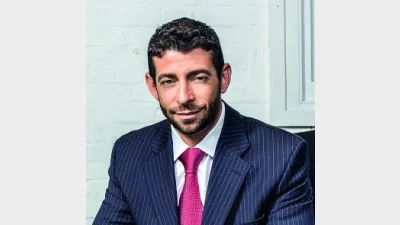Confidence to stay invested – the elusive frontier



David Itzkovits, Head of Investments, Sanlam Global Investment Solutions.
One of the fundamental challenges advisers face is deciding on the right portfolio for each of their clients. Not only do they need to decide exactly what proportion of assets to combine, they need to do so within the confines of the client’s risk tolerance and long-term goals.
One of the key concepts that accompanies this process is diversification - combining different asset classes that are not perfectly correlated.
The optimal or most ‘efficient’ combination of assets falls along the Efficient Frontier, which shows the best portfolio combinations that produce the greatest return for a given level of risk. In theory, if a client’s risk tolerance weren’t a factor, a client could choose any portfolio along the line plotted and receive the highest return for that specific level of risk.
The Efficient Frontier is curved because of the law of diminishing returns. Each unit of risk added to the portfolio adds slightly less return.
Based on that information, it would seem that all a financial adviser needs to do is calculate the Efficient Frontier and voilà, he or she can create the perfect set of portfolios for all clients at all risk levels.
The problem is the Efficient Frontier can change based on market conditions. We will explain this by showing four different periods of time, each 10 years apart.
Starting in 1980, using just equities and fixed income, you would plot the Efficient Frontier as follows:
This image looks very similar to the original Efficient Frontier picture. Yet in 1990 the same equities and fixed income investments produce a very different picture:
This changes again in 2000:
And 2010:
Four different time periods, four different efficient frontiers. The reason for the difference is the changes in equity returns and fixed-income yields over time. For example, in 2010 the compound annual growth rate for the S&P 500 with dividends reinvested for the preceding 10 years was 1.4%. Just 10 years earlier, in 2000, it was 17.4%.
Interest rates also had a huge effect on that calculus. Although interest rates change over each decade, if you looked only at average 10-year Treasury interest rates in 1980, 1990, 2000, and2010, they were 11.5%, 8.6%, 6% and 3.2%.
As an adviser, you should ask yourself: how often do I change my clients’ asset allocation? Is it the same 60/40 split to which balanced clients have been exposed for years, or is your process of updating portfolio weightings more robust?
Source: Milliman Financial Risk Management LLC Equities are based on an investment in the S&P500 index and bonds are based on an investment in the Barclays Capital Aggregate US Bond Index. Returns and volatilities are calculated over the preceding 10-year period using monthly data. Past performance is no indicator of future performance.
To read the full article on smoothing the client investment experience, please click here.
For more about Sanlam Managed Risk Funds, visit http://www3.colonialfirststate.com.au/adviser/investments/funds/Managed_Risk_Strategies.html
Recommended for you
Cryptocurrency liquidity has become a cornerstone of sophisticated wealth management strategies, with real-time settleme...
Recent turbulence in global equity markets should serve as a sharp reminder for investors that volatility doesn’t send a calendar invite.
In a world where influence transcends borders, Bancara offers access, authority, and lifestyle integration for a new generation of global investors.
Starting out as a sole trader typically invites a heady mix of freedom and fear. You’ve chosen to back yourself, build u...












